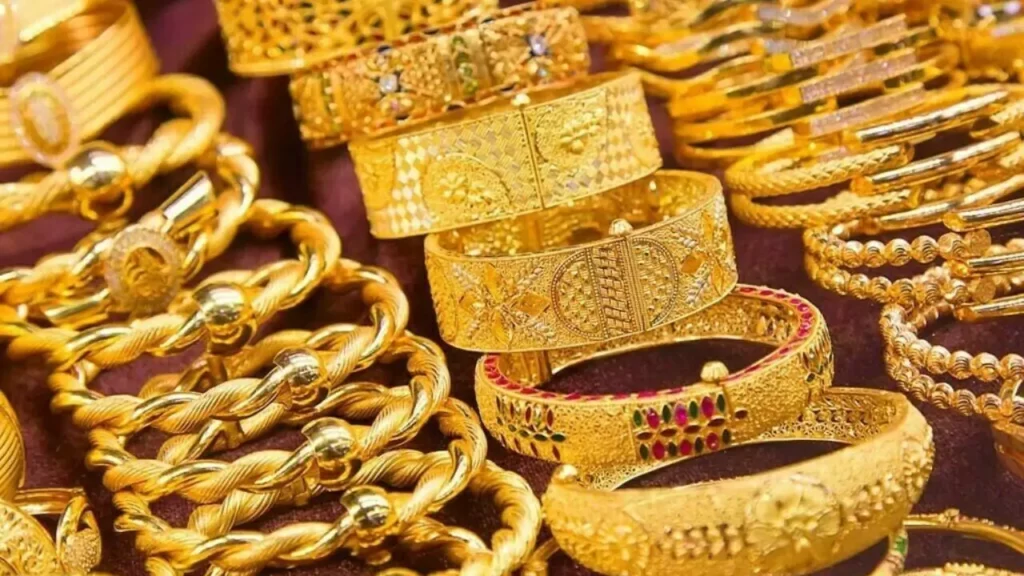Gold prices fell in India on Thursday, according to data from India’s Multi Commodity Exchange (MCX). The gold price stood at 62,566 Indian rupees (INR) per 10 grams, down INR 512 compared with the INR 63,078 it cost on Thursday.
As for futures contracts, gold prices decreased to INR 62,768 per 10 gms from INR 63,126. Prices for Silver futures contracts decreased to INR 72,430 per kg from INR 73,589 per kg.
| Major Indian city | Gold Price |
| New Delhi | 64,805 |
| Ahmedabad | 64,730 |
| Mumbai | 64,600 |
| Kolkata | 64,750 |
| Chennai | 64,740 |
Global Market Movers: Comex Gold price benefits from reviving safe-haven demand
- Geopolitical tensions and bets that the central bank would lower interest rates in March helped the Comex Gold price build on its overnight recovery from more than a one-week low.
- According to the minutes of the December FOMC meeting, most participants thought that the inclusion of ‘any’ in the statement meant that policy rates were probably close to their peak.
- even noted that conditions might necessitate maintaining interest rates at the current level for a longer period than they now expect, policymakers saw progress on inflation.
- Moreover, the minutes did not provide direct clues about the timing of when a series of interest rate cuts in 2024 might commence.
- Richmond Fed President Thomas Barkin expressed confidence on Wednesday that the economy is on its way to a soft landing and said that rate hikes remain on the table.
- The yield on the benchmark 10-year US government bond holds steady below 4.0%, which should act as a tailwind for the US dollar and cap the non-yielding yellow metal.
- The Institute for Supply Management (ISM) said on Wednesday that the pace of decline in the US manufacturing sector slowed amid a modest rebound in production.
- The US ISM Manufacturing PMI improved to 47.4 last month from 46.7 in November, though it remained in contraction territory for the 14th consecutive month.
- Traders are now focusing on the US ADP data, which is predicted to reveal that employment growth in the private sector increased by 115K in December, compared with 103K in November.
- The official monthly employment data, also referred to as the Nonfarm Payrolls (NFP) report, is expected to dominate market attention this Friday.
FAQS
Why do people invest in gold?
Gold has played a key role in human history as it has been widely used as a store of value and medium of exchange. Currently, apart from its shine and usage for jewelry, precious metal is widely seen as a safe-haven asset, meaning that it is considered a good investment during turbulent times. Gold is also widely seen as a hedge against inflation and depreciating currencies, as it doesn’t rely on any specific issuer or government.
Who buys the most gold?
Central banks are the biggest Gold holders. In their aim to support their currencies in turbulent times, central banks tend to diversify their reserves and buy Gold to improve the perceived strength of the economy and the currency. High Gold reserves can be a source of trust for a country’s solvency. Central banks added 1,136 tonnes of Gold worth around $70 billion to their reserves in 2022, according to data from the World Gold Council. This is the highest yearly purchase since records began. Central banks from emerging economies such as China, India and Turkey are quickly increasing their Gold reserves.
How is Gold correlated with other assets?
Gold has an inverse correlation with the US Dollar and US Treasuries, which are both major reserve and safe-haven assets. When the Dollar depreciates, Gold tends to rise, enabling investors and central banks to diversify their assets in turbulent times. Gold is also inversely correlated with risk assets. A rally in the stock market tends to weaken Gold price, while sell-offs in riskier markets tend to favor the precious metal.

